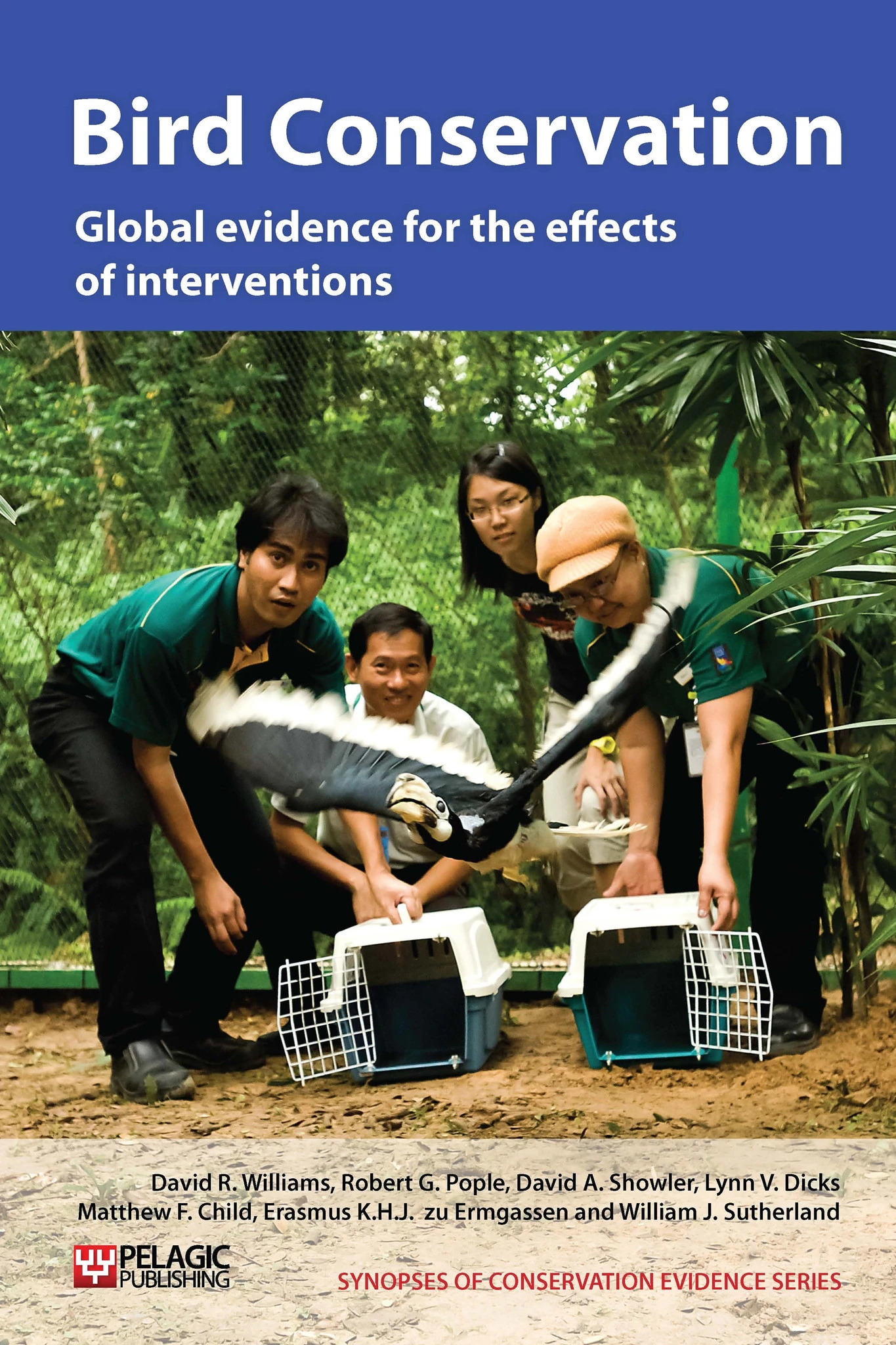Use netting to exclude fish-eating birds
-
Overall effectiveness category Likely to be beneficial
-
Number of studies: 6
View assessment score
Hide assessment score
How is the evidence assessed?
-
Effectiveness
60% -
Certainty
59% -
Harms
15%
Study locations
Supporting evidence from individual studies
A replicated trial in the winter of 1962-3 in North Rhine-Westphalia, Germany (Ueckermann et al. 1981), found that using string barriers and netting were effective at deterring grey herons Ardea cinerea from fish farms, if strings were 30 cm apart (larger distances being significantly less effective), but that occasional fatalities (entanglement) occurred. String barriers were ropes laid parallel across the water, 0.3 to 2 m apart; netting had 10 cm mesh size; and stumble ropes were also tested. This study also investigated the effects of scaring birds from fish farms, discussed in ‘Scare birds from fish farms’.
Study and other actions testedA series of experiments in Flevoland, the Netherlands, in 1981-3 (Moerbeel et al. 1987) found that nylon lines and ropes did not prevent cormorants from landing on fish ponds, but did change behaviour (from quick incursions by many birds to smaller numbers staying in ponds for longer). Effects on fish stocks are not reported. In 1981 nylon lines (forming 20 x 20 m squares) were placed over a 5 ha pond; in winter 1981-1982, 10 x 10 m squares were tested, and four ponds fitted with 20 x 20 m squares, with an irregular pattern over another; in 1983 over a 5 ha pond, ropes were stretched downwards from 10 m towers in the pond centre to the sides, with spacing between lines of 14-15 m). The effect of scaring birds from fish ponds is discussed in ‘Scare birds from fish farms’.
Study and other actions testedA 1995 review assessed effectiveness of techniques used to prevent double-crested cormorant Phalacrocorax auritus predation at aquaculture facilities in the Mississippi delta region, USA (Mott & Boyd 1995), and concluded that excluding birds using netting or wires was an effective way to reduce damage.
Study and other actions testedA before-and-after trial in trout farms in Colorado, USA, in 1990-2 (Andelt et al. 1997), found that 7 cm nylon netting significantly reduced great blue heron Ardea Herodias numbers next to ponds, but they stayed longer to capture fish after netting installation. Netting was 2.3 m long, 0.5 m high and slanted toward the water. The effects of various scaring devices is discussed in ‘Scare birds from fish farms’.
Study and other actions testedA controlled, replicated experiment in 1995-6 at 18 ponds in seven aquaculture facilities in Florida, USA (Avery et al. 1999), found that fish losses from ponds covered in netting were significantly lower (11%) than for uncovered ponds (38%). Main species predating fish were snowy egret Egretta thula, green-backed heron Butorides striatus, tricolored heron E. tricolor and little blue heron E. caerulea.
Study and other actions testedA replicated study in 2000-1 at 101 fish ponds, covered in 20 net types, in two fish farms in Israel (Nemtzov & Olsvig-Whittaker 2003) found that few or no dead birds were found in small mesh sizes with thick or dark-coloured netting. However, the largest numbers of entangled (dead) birds were found in two, thin monofilament net types, even though they had small mesh sizes (35 birds equivalent to 34/ha and 30 birds, equivalent to 25/ha). Ponds with slack, horizontal nets also had fewer dead birds, probably because they were more visible (flapping in the wind) than tight-strung nets. Entrapment within some ponds was attributed to poor net maintenance (e.g. holes/tears). A total of 327 dead (entangled) and 4,575 live birds (under nets) of 31 species were recorded.
Study and other actions tested
Where has this evidence come from?
List of journals searched by synopsis
All the journals searched for all synopses
This Action forms part of the Action Synopsis:
Bird Conservation
Bird Conservation - Published 2013
Bird Synopsis





)_2023.JPG)














